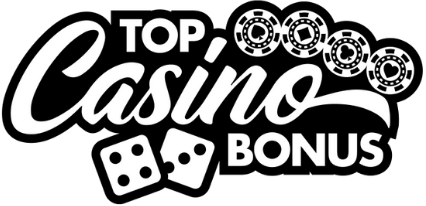Tournament poker vs. cash game poker: pros and cons
Too many players jump into poker thinking it’s all about pattern recognition and a bit of gall, bluff here, shove there, hope for the best. They might even win a few hands and think they’ve cracked the code. But the deeper you go, the more you realize: tournament poker and cash game poker aren’t just two variants of the same game. They’re like wrestling an eel versus taming a bull. Each demands a totally different mindset, bankroll strategy, and understanding of risk cycles. Let’s cut through the noise and separate the romantic notions from grounded, sweat-earned truth.
Table of contents
Understanding the fundamental differences
Here’s the crux, cash games and tournaments might look similar on the surface, but their core principles are chalk and cheese. In cash games, every chip is money. You can reload whenever you want. In tournaments, those chips are your lifeline; once they’re gone, you’re out. That’s not just semantics, it changes everything.
Structure and dynamics
Cash games run 24/7. Blinds stay fixed. You can sit, play for an hour, and walk away. Tournaments have increasing blinds, antes, and payout bubbles. You need to adjust constantly, not just to the cards, but to shifting stacks and other players’ desperation levels.
I’ve seen players dominate a $2/$5 table for hours only to completely implode during a $100 tournament. Why? They never adjusted from deep-stack poker to short-stack aggression. Clock pressure doesn’t exist in cash games, but in tournaments, it’s relentless. You’re not just against players, you’re against time, math, and momentum.
Bankroll management
This is where too many get it wrong. In a cash game, a solid bankroll is about 20-30 buy-ins for your level. In tournaments? You’re looking at 100–200+ buy-ins, because variance in tournaments hits like a freight train. One week you’re running deep. Next week you’re not even sniffing the money.
Back in the day, I’d see eager players blow their roll chasing that one big payout. They treated variance like a vending machine: put enough in, get results. But poker variance is more like thunder: it doesn’t follow your schedule.
The pros of tournament poker
Tournament poker has an undeniable allure. Who doesn’t dream of turning a $20 buy-in into $20,000 in a day? But there’s more to it than just trophy dreams and big headlines.
Massive upside potential
Tournaments are one of the few venues in gambling where David really can take down Goliath. You can enter a field with pros, and with good prep and guts, finish in the money, maybe even win big. That sort of ROI doesn’t exist in jackpot slots or other high-volatility formats outside poker.
Skill expression in late stages
When a tourney gets down to two or three tables, that’s when the real poker starts. Reading bet patterns, exploiting bubble dynamics, mastering ICM, that’s where you outshine luck. I once chopped a tourney heads-up where my heads-up opponent failed to adjust to the payout structure. That’s decades of ICM finesse right there, not just swagger.
The cons of tournament poker
But make no mistake, tournament life isn’t all glitz. It’s brutal, and the cons are substantial if you’re not built for them.
Time commitment and emotional endurance
A single multi-table tournament can eat 10 hours of your day. And the kicker? You might bust before the bubble. Even deep runs can end under freakish hands. Ever flopped the nut flush and lost to runner-runner quads on the stone bubble? I have, and I still feel the sting in my molars.
Volume and variance dependency
Tournament success demands high volume over time. If you’re not playing hundreds of entries, even stellar skill can be masked. It’s why some tournament grinders burn out, they mistake short-term variance for a lack of skill or bad luck. The truth? Even legends hit 5% ITM over the long haul. Handle that?
The pros of cash game poker
Cash games are as pure and raw as poker gets. No fanfare, just chips, calls, raises, and folds. And that singular purity comes with real advantages.
Reliable income potential
Cash games are the bread-and-butter grind. If you’ve got edge and discipline, you can extract steady profit week after week. I used to run five-night sessions grinding $5/$10, racking up small, consistent wins. Ask any true grinder: the steady climb beats the lottery spike.
Flexibility and control
You can start and stop as you see fit. That’s a blessing if you’re managing tilt or have other obligations. No lock-in like a tournament. You find a soft table, play three hours, and walk. Contrast that with tournament schedules, and it’s night and day.
The cons of cash game poker
But that flexibility comes with its own set of pitfalls. Cash games are a slow burn. There’s no trophy. No final table. Just you, the rake, and your win rate.
Plateau and complacency
Cash game regs often plateau. No external challenges, no final-table pressure. I’ve seen talented players camp out at $1/$2 for years, too scared to move up. Why? Because without the variance-induced spikes of tournaments, it’s all grind, and grind wears down the undisciplined.
Limited risk-to-reward ratio
In a cash game, you bring $500 to the table and might walk with $300 profit on a great night. But that’s capped unless you climb stakes. Tournament players can dream of that 100x payday. Cash game players? You better learn compounding math, and have a spine for steady growth.
Which format suits which player?
The honest answer? It depends on your DNA. Tournament players need resilience, adaptability, and volume-fueled stamina. Cash grinders need discipline, bankroll control, and a monk’s patience. There’s overlap, sure, but mastery demands choosing one path and dedicating wholly to its terrain.
If you’re experimenting on new platforms and trying to understand alternative formats, digging into the sweepstakes and social casino legality landscape can help broaden your view of what legal constraints and freedoms apply to poker-adjacent ecosystems. Don’t walk blind.
A new player’s pitfall and how to avoid it
Too many folks chase tournament glitz without realizing they’re under-bankrolled, under-skilled, and overconfident. They play one format today, another tomorrow, never learning either well. Pick a lane. Study deeply. Tool up with the right reading, maybe even dip into crash casino games for mental training on fast-risk decisions. There’s symbiosis in smart places.
If you’re drawn to a real-time, high-stakes thrill, consider practicing some plays at live dealer casinos, where reading rhythm and psychology mimics the feel of a real table. It’s a great middle ground for sharpening real-world edge pre-event.
Final thoughts and your next steps
Don’t confuse motion with progress. Whether you’re grinding cash or firing tourneys, success comes from focus, discipline, and ongoing education. Study ranges, review hands, build your mental toughness. And if you’ve got the guts to up the stakes, explore the terrain at high roller online casinos to test your mettle. That’s where lions feast, or get mauled.
At the end of the day, it all comes down to this, do you want a steady path of consistent growth, or are you built for occasional sky-high peaks soaked in volatility and volume? Know thyself. Only then can you play the game right, and maybe, just maybe, master it.





0 Comments